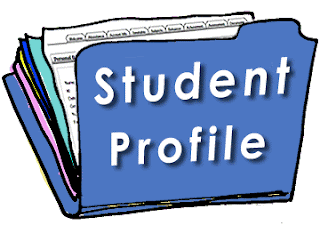Profile Building Activity – Essential for Students Pursing Higher Education in Indian and Abroad.
The children and young population in India are one of the highest cohorts at this point in time. Children born between 1997 to 2010 now contribute to a little over 36 crores of India’s total population of over 140 Crores now.
As the population of this cohort increases in
India, the growth in school admissions also growing accordingly. Between 2010
to 2021, there 185% increase in the number of students passing from CBSE
(from 7 Lakhs to 13 Lakhs).
Also, there is a substantial increase in the
manner the children are now scoring marks in the 10th board exams.
Students scoring 90% or more have increased 8 times between 2010
to 2020 (17,546 to 1,57,934). And students scoring 95% or more
has increased just doubled in two years (2019 to 2020).
At the same time, the admissions into the top
colleges and universities and colleges in India and Abroad are becoming
tougher.
For example, getting into the top 100
Engineering colleges in India (which have approx. 45000 seats) in
India could be very tough at just 3.6%. The probability to get into
IIT or NIT is 1.1% and 1.7% respectively. There is a YouTube video about
this which you can check out. https://youtu.be/gqXRj__BFzc.
Getting into the MBBS or BDS college in India
is also fairly tough, there are about 83 K MBBS seats and 26 K BDS Seats,
and over 16 Lakhs students attempt to get into those colleges. Check out
a relevant video about the same on YouTube: https://youtu.be/5QlAoYOo60I
Another example of the Law exam, CLAT,
for about 2100 seats, over 62 K students appeared in 2021.
In the National Education Policy, there
is mention of the shift from the traditional method to the more holistic
approach of assessment soon.
The below para is referred from the NEP 2020
“It is proposed to set up a National Assessment Centre,
PARAKH (Performance Assessment, Review, and Analysis of Knowledge for Holistic
Development), as a standard-setting body under MHRD that fulfills the basic
objectives of setting norms, standards, and guidelines for student assessment
and evaluation for all recognized school boards of India, guiding the State
Achievement Survey (SAS) and undertaking the National Achievement Survey (NAS),
monitoring achievement of learning outcomes in the country, and encouraging and helping school
boards to shift their assessment patterns towards meeting the skill
requirements of the 21st century
in consonance with the stated objectives of this Policy. This Centre will also
advise school boards regarding new assessment patterns and the latest research,
promote collaborations between school boards. It will also become an instrument for
the sharing of best practices among school boards, and for ensuring equivalence
of academic standards among learners across all school boards.”
“A holistic and multidisciplinary education would aim to
develop all capacities of human beings -intellectual, aesthetic, social,
physical, emotional, and moral in an integrated manner. Such an education will help
develop well-rounded individuals that possess critical 21st-century
capacities in fields across the arts, humanities, languages, sciences, social
sciences, and professional, technical, and vocational fields; an ethic of
social engagement; soft skills, such as communication, discussion, and debate;
and rigorous specialization in a chosen field or fields. Such a
holistic education shall be, in the long term, the approach of all
undergraduate programs, including those in professional, technical, and
vocational disciplines.”
Page 47
“Thus, this Policy envisions a comprehensive approach to
transforming the quality and quantity of research in India. This includes definitive shifts
in school education to a more play and discovery-based style of learning with
an emphasis on the scientific method and critical thinking. This includes
career counseling in schools towards identifying student interests and talents,
promoting research in universities, the multidisciplinary nature of all HEIs
and the emphasis on holistic education, the inclusion of research and
internships in the undergraduate curriculum, faculty career management systems
that give due weightage to research, and the governance and regulatory changes
that encourage an environment of research and innovation. All of
these aspects are extremely critical for developing a research mindset in the
country.”
In view of the above developments in terms of
the demographics of India and the changes in the proposed National Educational
Policy, it is prudent to engage your child in some kind of holistic development
program which can be Co-Curricular, Extra – Curricular, Academic Honors
Programs, Career-Focused Courses, and Summer Internship Programs to give the
child the explore the various career options before choosing the best fit.
In the case of Abroad education, this becomes even more important, as the UG colleges look at the holistic profile of the student and not just only the academic grades.
Holistic development will take a few years ranging from 1 to 4 years, so the early one starts, the better for the child in the wake of the forthcoming intense competition in his or her cohort.



.jpg)
Comments
Post a Comment